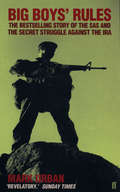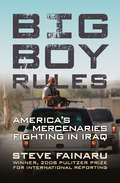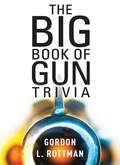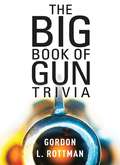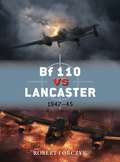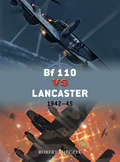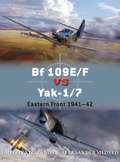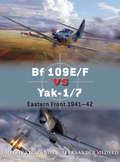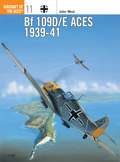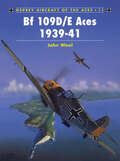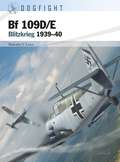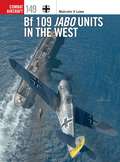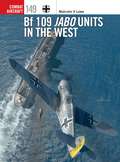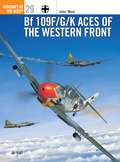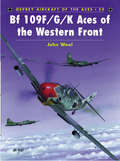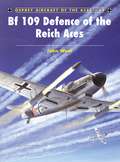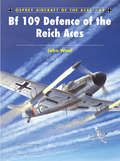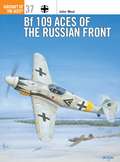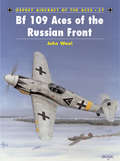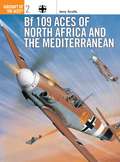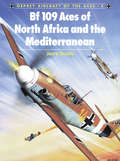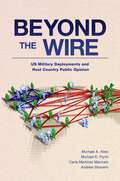- Table View
- List View
Big Data, Emerging Technologies and Intelligence: National Security Disrupted (Studies in Intelligence)
by Miah Hammond-ErreyThis book sets out the big data landscape, comprising data abundance, digital connectivity and ubiquitous technology, and shows how the big data landscape and the emerging technologies it fuels are impacting national security.This book illustrates that big data is transforming intelligence production as well as changing the national security environment broadly, including what is considered a part of national security as well as the relationships agencies have with the public. The book highlights the impact of big data on intelligence production and national security from the perspective of Australian national security leaders and practitioners, and the research is based on empirical data collection, with insights from nearly 50 participants from within Australia’s National Intelligence Community. It argues that big data is transforming intelligence and national security and shows that the impacts of big data on the knowledge, activities and organisation of intelligence agencies is challenging some foundational intelligence principles, including the distinction between foreign and domestic intelligence collection. Furthermore, the book argues that big data has created emerging threats to national security; for example, it enables invasive targeting and surveillance, drives information warfare as well as social and political interference, and challenges the existing models of harm assessment used in national security. The book maps broad areas of change for intelligence agencies in the national security context and what they mean for intelligence communities, and explores how intelligence agencies look out to the rest of society, considering specific impacts relating to privacy, ethics and trust.This book will be of much interest to students of intelligence studies, technology studies, national security and International Relations.
Big Data, Emerging Technologies and Intelligence: National Security Disrupted (Studies in Intelligence)
by Miah Hammond-ErreyThis book sets out the big data landscape, comprising data abundance, digital connectivity and ubiquitous technology, and shows how the big data landscape and the emerging technologies it fuels are impacting national security.This book illustrates that big data is transforming intelligence production as well as changing the national security environment broadly, including what is considered a part of national security as well as the relationships agencies have with the public. The book highlights the impact of big data on intelligence production and national security from the perspective of Australian national security leaders and practitioners, and the research is based on empirical data collection, with insights from nearly 50 participants from within Australia’s National Intelligence Community. It argues that big data is transforming intelligence and national security and shows that the impacts of big data on the knowledge, activities and organisation of intelligence agencies is challenging some foundational intelligence principles, including the distinction between foreign and domestic intelligence collection. Furthermore, the book argues that big data has created emerging threats to national security; for example, it enables invasive targeting and surveillance, drives information warfare as well as social and political interference, and challenges the existing models of harm assessment used in national security. The book maps broad areas of change for intelligence agencies in the national security context and what they mean for intelligence communities, and explores how intelligence agencies look out to the rest of society, considering specific impacts relating to privacy, ethics and trust.This book will be of much interest to students of intelligence studies, technology studies, national security and International Relations.
Big Boys' Rules: The SAS and the Secret Struggle Against the IRA
by Mark UrbanThe SAS describes its attitude to the use of lethal force as 'Big boys' games, big boys' rules'. Anyone caught with a gun or bomb can expect to be shot. In Big Boys' Rules: The SAS and the Secret Struggle Against the IRA Mark Urban meticulously explores the security forces' covert operations in Northern Ireland: from the mid-1970s, when they were stepped up, to the Loughall ambush in 1987, in which eight IRA Provisionals were killed. While charting the successes and failures of special operations during the troubles, Urban reveals the unenviable dilemmas faced by intelligence chiefs engaged in a daily struggle against one of the world's most sophisticated terrorist organisations.'This is a book that needed to be written and which fulfils the essentials of any Ulster story; it expands understanding beyond fragmented jingoism and newspaper headlines.' John Stalker, Sunday Times
Big Boy Rules: America's Mercenaries Fighting in Iraq
by Steve FainaruThere are tens of thousands of them in Iraq. They work for companies with exotic and ominous-sounding names, like Crescent Security Group, Triple Canopy, and Blackwater Worldwide. They travel in convoys of multicolored pickups fortified with makeshift armor, belt-fed machine guns, frag grenades, and even shoulder-fired missiles. They protect everything from the U.S. ambassador and American generals to shipments of Frappuccino bound for Baghdad&’s Green Zone. They kill Iraqis, and Iraqis kill them. And the only law they recognize is Big Boy Rules. From a Pulitzer Prize–winning reporter comes a harrowing journey into Iraq&’s parallel war. Part MadMax, part Fight Club, it is a world filled with &“private security contractors&”—the U.S. government&’s sanitized name for tens of thousands of modern mercenaries, or mercs, who roam Iraq with impunity, doing jobs that the overstretched and understaffed military can&’t or won&’t do. They are men like Jon Coté, a sensitive former U.S. army paratrooper and University of Florida fraternity brother who realizes too late that he made a terrible mistake coming back to Iraq. And Paul Reuben, a friendly security company medic who has no formal medical training and lacks basic supplies, like tourniquets. They are part of America&’s &“other&” army—some patriotic, some desperate, some just out for cash or adventure. And some who disappear into the void that is Iraq and are never seen again.Washington Post reporter Steve Fainaru traveled with a group of private security contractors to find out what motivates them to put their lives in danger every day. He joined Jon Coté and the men of Crescent Security Group as they made their way through Iraq—armed to the teeth, dodging not only bombs and insurgents but also their own Iraqi colleagues. Just days after Fainaru left to go home, five men of Crescent Security Group were kidnapped in broad daylight on Iraq&’s main highway. How the government and the company responded reveals the dark truths behind the largest private force in the history of American warfare. . . . With 16 pages of photographs
The Big Book of Gun Trivia: Everything you want to know, don’t want to know, and don’t know you need to know
by Gordon L. RottmanA complete guide to weapons history, facts, myths and trivia, covering everything you wanted to know, didn't want to know and you don't know you need to know... Gordon Rottman offers a step by step guide through interesting weapon facts and statistics, including a section on ammunition, while breaking apart popular myths and misconceptions. Covering subjects from weapons designations to the longest serving military rifles, where rifles get their names from and everything in between, Osprey is proud to present The Big Book of Gun Trivia.
The Big Book of Gun Trivia: Everything you want to know, don’t want to know, and don’t know you need to know
by Gordon L. RottmanA complete guide to weapons history, facts, myths and trivia, covering everything you wanted to know, didn't want to know and you don't know you need to know... Gordon Rottman offers a step by step guide through interesting weapon facts and statistics, including a section on ammunition, while breaking apart popular myths and misconceptions. Covering subjects from weapons designations to the longest serving military rifles, where rifles get their names from and everything in between, Osprey is proud to present The Big Book of Gun Trivia.
Bf 110 vs Lancaster: 1942–45 (Duel)
by Jim Laurier Robert Forczyk Gareth HectorThe RAF introduced the Avro Lancaster in 1942 and used it to spearhead this aerial offensive. In response, the Luftwaffe created an elite nightfighter force based primarily upon the Bf 110. The Luftwaffe was quick to equip it with airborne radar that allowed it to intercept and destroy Lancasters over Germany. In turn, the RAF adopted countermeasures such as the Monica rearward-looking radar to alert Lancaster crews to the approach of nightfighters. In May 1943 the Luftwaffe suddenly developed a novel technical and tactical approach to attacking RAF bombers. The new tactic proved amazingly successful, and British bombers could be attacked from below with no warning. For its part, the RAF failed to detect the new German tactic for six crucial months, during which time its Lancaster bombers were almost defenceless against this new threat. In time, however, the German advantage of surprise was lost and the RAF developed countermeasures to deal with the new threat. The duel between upgraded Bf 110s and Lancasters in the night skies over Germany became increasingly dominated by cutting-edge technology, which would determine the efficacy of strategic bombing.
Bf 110 vs Lancaster: 1942–45 (Duel #51)
by Jim Laurier Robert Forczyk Gareth HectorThe RAF introduced the Avro Lancaster in 1942 and used it to spearhead this aerial offensive. In response, the Luftwaffe created an elite nightfighter force based primarily upon the Bf 110. The Luftwaffe was quick to equip it with airborne radar that allowed it to intercept and destroy Lancasters over Germany. In turn, the RAF adopted countermeasures such as the Monica rearward-looking radar to alert Lancaster crews to the approach of nightfighters. In May 1943 the Luftwaffe suddenly developed a novel technical and tactical approach to attacking RAF bombers. The new tactic proved amazingly successful, and British bombers could be attacked from below with no warning. For its part, the RAF failed to detect the new German tactic for six crucial months, during which time its Lancaster bombers were almost defenceless against this new threat. In time, however, the German advantage of surprise was lost and the RAF developed countermeasures to deal with the new threat. The duel between upgraded Bf 110s and Lancasters in the night skies over Germany became increasingly dominated by cutting-edge technology, which would determine the efficacy of strategic bombing.
Bf 109E/F vs Yak-1/7: Eastern Front 1941–42 (Duel)
by Jim Laurier Dmitriy Khazanov Andrey Yurgenson Gareth Hector Aleksander MedvedStep into the cockpits of the Luftwaffe's Bf 109 and the Red Air Force's Yaks 1-7, two fighters which were involved in some of the largest, fiercest aerial battles in history. The Iconic Messerschmitt fighter and its combat hardened pilots inflicted a fearful beating on the Yaks in the beginning of the war. Some of the highest scoring aces in history benefitted from the Bf 109's technical superiority over the overweight and underpowered Yak 1, racking up incredible successes against their poorly trained and equipped adversaries. And yet, as the Soviets accumulated combat experience, their tactics improved, as did their mounts in the upgraded Yak 1B and gradually, the Red Force eroded the Jagdwaffe's dominance of the skies in the eastern front, though with the 109G they would never lose qualitative superiority. Featuring first-hand accounts from veteran pilots, rare archival photographs and expert analysis, this volume brings to life the vicious dogfights that took place between the Bf 109 and the Yak as they vied for mastery of the frozen skies of the Eastern Front.
Bf 109E/F vs Yak-1/7: Eastern Front 1941–42 (Duel)
by Jim Laurier Dmitriy Khazanov Andrey Yurgenson Gareth Hector Aleksander MedvedStep into the cockpits of the Luftwaffe's Bf 109 and the Red Air Force's Yaks 1-7, two fighters which were involved in some of the largest, fiercest aerial battles in history. The Iconic Messerschmitt fighter and its combat hardened pilots inflicted a fearful beating on the Yaks in the beginning of the war. Some of the highest scoring aces in history benefitted from the Bf 109's technical superiority over the overweight and underpowered Yak 1, racking up incredible successes against their poorly trained and equipped adversaries. And yet, as the Soviets accumulated combat experience, their tactics improved, as did their mounts in the upgraded Yak 1B and gradually, the Red Force eroded the Jagdwaffe's dominance of the skies in the eastern front, though with the 109G they would never lose qualitative superiority. Featuring first-hand accounts from veteran pilots, rare archival photographs and expert analysis, this volume brings to life the vicious dogfights that took place between the Bf 109 and the Yak as they vied for mastery of the frozen skies of the Eastern Front.
Bf 109D/E Aces 1939–41 (Aircraft of the Aces)
by John WealThe period covered in this volume was considered to be the 'glory years' for the Jagdwaffe fresh from the experience gained in the Spanish Civil War and for the Bf 109 in particular. Many famous pilots scored their first kills in the classic dogfights staged over Poland, Western Europe, the Channel and finally southern England. Some 40 Knight's Crosses were awarded in 1940 alone. However, after sweeping all before them in support of the Blitzkrieg across continental Europe, the Bf 109E pilots were to suffer badly during the Battle of Britain, the result of poor tactics inflicted upon them by the Luftwaffe High Command, and their mount's less then generous range.
Bf 109D/E Aces 1939–41 (Aircraft of the Aces #11)
by John WealThe period covered in this volume was considered to be the 'glory years' for the Jagdwaffe fresh from the experience gained in the Spanish Civil War and for the Bf 109 in particular. Many famous pilots scored their first kills in the classic dogfights staged over Poland, Western Europe, the Channel and finally southern England. Some 40 Knight's Crosses were awarded in 1940 alone. However, after sweeping all before them in support of the Blitzkrieg across continental Europe, the Bf 109E pilots were to suffer badly during the Battle of Britain, the result of poor tactics inflicted upon them by the Luftwaffe High Command, and their mount's less then generous range.
Bf 109D/E: Blitzkrieg 1939–40 (Dogfight)
by Malcolm V. LoweUsing first-hand accounts and brand-new artwork, this book brings to life the realities of flying the Bf 109 in combat during the very first battles of World War II.The Bf 109 was one of the principal fighter aircraft types in the Luftwaffe's inventory during the opening months of World War II and it was central to many of Germany's early victories, before coming up against the unbeatable RAF during the Battle of Britain.This book presents first-hand experiences of the pilots who flew the Bf 109E, the aircraft which first featured a Daimler-Benz DB 601 powerplant, and which was in the front line in the skies over Poland, the Low Countries and France, and the older Bf 109D, still in use in the Polish campaign.The early variants of the Messerschmitt fighter, the Bf 109E-1, Bf 109E-2 and Bf 109E-3, swept all before them during the opening wartime campaigns, their successes only fading at the Battle of France, when the Bf 109's seasoned pilots encountered modern and well-flown RAF and Armée de l'Air fighters.In a rigorous and engaging new analysis, Luftwaffe aviation expert Malcolm V. Lowe examines and assesses the Bf 109 as a fighting machine from the perspective of the Luftwaffe at the forefront of the German blitzkrieg. Contemporary photographs and specially commissioned artwork, including a dramatic battlescene, armament views, technical diagrams and ribbon diagrams illustrating step-by-step each battle tactic of the main dogfights explored in the book, bring the experiences of the Bf 109 pilots vividly to life.
Bf 109D/E: Blitzkrieg 1939–40 (Dogfight)
by Malcolm V. LoweUsing first-hand accounts and brand-new artwork, this book brings to life the realities of flying the Bf 109 in combat during the very first battles of World War II.The Bf 109 was one of the principal fighter aircraft types in the Luftwaffe's inventory during the opening months of World War II and it was central to many of Germany's early victories, before coming up against the unbeatable RAF during the Battle of Britain.This book presents first-hand experiences of the pilots who flew the Bf 109E, the aircraft which first featured a Daimler-Benz DB 601 powerplant, and which was in the front line in the skies over Poland, the Low Countries and France, and the older Bf 109D, still in use in the Polish campaign.The early variants of the Messerschmitt fighter, the Bf 109E-1, Bf 109E-2 and Bf 109E-3, swept all before them during the opening wartime campaigns, their successes only fading at the Battle of France, when the Bf 109's seasoned pilots encountered modern and well-flown RAF and Armée de l'Air fighters.In a rigorous and engaging new analysis, Luftwaffe aviation expert Malcolm V. Lowe examines and assesses the Bf 109 as a fighting machine from the perspective of the Luftwaffe at the forefront of the German blitzkrieg. Contemporary photographs and specially commissioned artwork, including a dramatic battlescene, armament views, technical diagrams and ribbon diagrams illustrating step-by-step each battle tactic of the main dogfights explored in the book, bring the experiences of the Bf 109 pilots vividly to life.
Bf 109 Jabo Units in the West (Combat Aircraft)
by Malcolm V. LoweUsing specially commissioned artwork and detailing technical specifications, this book explores the Bf 109's different roles occasioned by wartime necessity, from its employment as a fighter to its evolution as a fighter-bomber.One of the principal types in the Luftwaffe's inventory at the beginning of World War II, the piston-engined Bf 109 was central to the many initial victories that the Germans achieved before coming up against the unbeatable RAF during the Battle of Britain. Nevertheless, by the second half of 1940 the Bf 109's operability was widened due to operational needs and it was flown as a fighter-bomber for precision attacks in Southern England. At first ad hoc conversions were made 'in the field' to allow the aircraft to carry a bomb or extra fuel tank. Such modifications were soon formalised by Messerschmitt, which created the Jabo Bf 109s. Drawing from pilots' first-hand accounts, author Malcolm V. Lowe explores the number of specialised units, including Lehrgeschwader 2 and dedicated fighter-bomber sections of standard fighter units such as 10. Staffel of Jagdgeschwader 26, which flew this highly specialised fighter-bomber. Including technical specifications, rare photographs and outstanding artwork, this book explores the Jabo versions of the Bf 109E, F and G both on the production line and with the addition of Rüstsätze field conversion kits.
Bf 109 Jabo Units in the West (Combat Aircraft #149)
by Malcolm V. LoweUsing specially commissioned artwork and detailing technical specifications, this book explores the Bf 109's different roles occasioned by wartime necessity, from its employment as a fighter to its evolution as a fighter-bomber.One of the principal types in the Luftwaffe's inventory at the beginning of World War II, the piston-engined Bf 109 was central to the many initial victories that the Germans achieved before coming up against the unbeatable RAF during the Battle of Britain. Nevertheless, by the second half of 1940 the Bf 109's operability was widened due to operational needs and it was flown as a fighter-bomber for precision attacks in Southern England. At first ad hoc conversions were made 'in the field' to allow the aircraft to carry a bomb or extra fuel tank. Such modifications were soon formalised by Messerschmitt, which created the Jabo Bf 109s. Drawing from pilots' first-hand accounts, author Malcolm V. Lowe explores the number of specialised units, including Lehrgeschwader 2 and dedicated fighter-bomber sections of standard fighter units such as 10. Staffel of Jagdgeschwader 26, which flew this highly specialised fighter-bomber. Including technical specifications, rare photographs and outstanding artwork, this book explores the Jabo versions of the Bf 109E, F and G both on the production line and with the addition of Rüstsätze field conversion kits.
Bf 109 F/G/K Aces of the Western Front (Aircraft of the Aces)
by John WealThe follow--on volume to Osprey Aircraft of the Aces 11 Bf 109D/E Aces 1939-41, this book charts the story of the myriad aces who flew the later marks of Messerschmitt fighter through to VE-Day. As good as the Emil had been during the opening 18 months of the war, the aircraft was being progressively bettered in virtually all aspects of aerial combat by the Spitfire come 1941, so Messerschmitt updated and improved the breed, firstly with the introduction of the Friedrich and then the multi-variant Gustav.
Bf 109 F/G/K Aces of the Western Front (Aircraft of the Aces #29)
by John WealThe follow--on volume to Osprey Aircraft of the Aces 11 Bf 109D/E Aces 1939-41, this book charts the story of the myriad aces who flew the later marks of Messerschmitt fighter through to VE-Day. As good as the Emil had been during the opening 18 months of the war, the aircraft was being progressively bettered in virtually all aspects of aerial combat by the Spitfire come 1941, so Messerschmitt updated and improved the breed, firstly with the introduction of the Friedrich and then the multi-variant Gustav.
Bf 109 Defence of the Reich Aces (Aircraft of the Aces)
by John WealThis volume tells the story of the daylight air battles over Germany through the eyes of the Bf 109 aces involved. It traces the development of the aerial defence of the Reich from its small beginnings to arguably the most savage and costliest campaign in the history of aerial warfare. The Luftwaffe pilots explain their tactics and relate their experiences – in the early days, waiting for short-ranged Allied fighters to turn back before attacking the bombers, the see-saw battle for aerial supremacy that followed, the advent of the P-51 and its devastating effect, the growing might of the heavy bomber streams and the final desperate measures against overwhelming odds. The story is predominantly that of the Bf 109's struggle to defeat the US Eighth Air Force, although latterly both the 'mediums' of the US Ninth Air Force and the 'heavies' of RAF Bomber Command were also active by day over Germany.
Bf 109 Defence of the Reich Aces (Aircraft of the Aces #68)
by John WealThis volume tells the story of the daylight air battles over Germany through the eyes of the Bf 109 aces involved. It traces the development of the aerial defence of the Reich from its small beginnings to arguably the most savage and costliest campaign in the history of aerial warfare. The Luftwaffe pilots explain their tactics and relate their experiences – in the early days, waiting for short-ranged Allied fighters to turn back before attacking the bombers, the see-saw battle for aerial supremacy that followed, the advent of the P-51 and its devastating effect, the growing might of the heavy bomber streams and the final desperate measures against overwhelming odds. The story is predominantly that of the Bf 109's struggle to defeat the US Eighth Air Force, although latterly both the 'mediums' of the US Ninth Air Force and the 'heavies' of RAF Bomber Command were also active by day over Germany.
Bf 109 Aces of the Russian Front (Aircraft of the Aces)
by John Weal Iain WyllieThe highest scoring aces of any aerial conflict were the Luftwaffe pilots involved in the bloody combats on the Russian Front. The most common fighter used by these pilots was the Bf 109, which was involved in the action from Operation Barbarossa in June 1941, through to the doomed Defence of the Reich in 1945. Units like JGs 5, 52 and 54 all flew the Messerschmitt fighter, progressing from Emil to Gustav variants. This volume includes all the high-scoring aces, and explains just how difficult a job the Jagdwaffe faced on the Russian Front, and how its experts achieved such overwhelming scores. Aircraft of the Aces 6 and 37 are also available in a single volume as 'German Aces of the Russian Front'.
Bf 109 Aces of the Russian Front (Aircraft of the Aces #37)
by John Weal Iain WyllieThe highest scoring aces of any aerial conflict were the Luftwaffe pilots involved in the bloody combats on the Russian Front. The most common fighter used by these pilots was the Bf 109, which was involved in the action from Operation Barbarossa in June 1941, through to the doomed Defence of the Reich in 1945. Units like JGs 5, 52 and 54 all flew the Messerschmitt fighter, progressing from Emil to Gustav variants. This volume includes all the high-scoring aces, and explains just how difficult a job the Jagdwaffe faced on the Russian Front, and how its experts achieved such overwhelming scores. Aircraft of the Aces 6 and 37 are also available in a single volume as 'German Aces of the Russian Front'.
Bf 109 Aces of North Africa and the Mediterranean (Aircraft of the Aces #2)
by Jerry Scutts Chris DaveyTotally outnumbered throughout their short two-year sojourn in the Western Desert, the crack fighter pilots of the handful of Jagdgeschwader in-theatre fought an effective campaign in support of Rommel's Afrika Korps against the British and American forces. Relying almost exclusively on the Luftwaffe's staple fighter of World War 2, the Messerschmitt Bf 109, the battle-hardened aces used the aircraft's superior performance to achieve incredible scores against the Allies. Similarly, once pushed out of North Africa, these units continued to take the fight to the RAF and USAAF from makeshift bases in northern Italy.
Bf 109 Aces of North Africa and the Mediterranean (Aircraft of the Aces #2)
by Jerry Scutts Chris DaveyTotally outnumbered throughout their short two-year sojourn in the Western Desert, the crack fighter pilots of the handful of Jagdgeschwader in-theatre fought an effective campaign in support of Rommel's Afrika Korps against the British and American forces. Relying almost exclusively on the Luftwaffe's staple fighter of World War 2, the Messerschmitt Bf 109, the battle-hardened aces used the aircraft's superior performance to achieve incredible scores against the Allies. Similarly, once pushed out of North Africa, these units continued to take the fight to the RAF and USAAF from makeshift bases in northern Italy.
Beyond the Wire: US Military Deployments and Host Country Public Opinion (BRIDGING THE GAP SERIES)
by Michael A. Allen Carla Martinez Machain Michael E. Flynn Andrew StraversIn a time where US deployments are uncertain, this book shows how US service members can either build the necessary support to sustain their presence or create added animosity towards the military presence. The United States stands at a crossroads in international security. The backbone of its international position for the last 70 years has been the massive network of overseas military deployments. However, the US now faces pressures to limit its overseas presence and spending. In Beyond the Wire, Michael Allen, Michael Flynn, Carla Martinez Machain, and Andrew Stravers argue that the US has entered into a "Domain of Competitive Consent" where the longevity of overseas deployments relies upon the buy-in from host-state populations and what other major powers offer in security guarantees. Drawing from three years of surveys and interviews across fourteen countries, they demonstrate that a key component of building support for the US mission is the service members themselves as they interact with local community members. Highlighting both the positive contact and economic benefits that flow from military deployments and the negative interactions like crime and anti-base protests, this book shows in the most rigorous and concrete way possible how US policy on the ground shapes its ability to advance its foreign policy goals.

